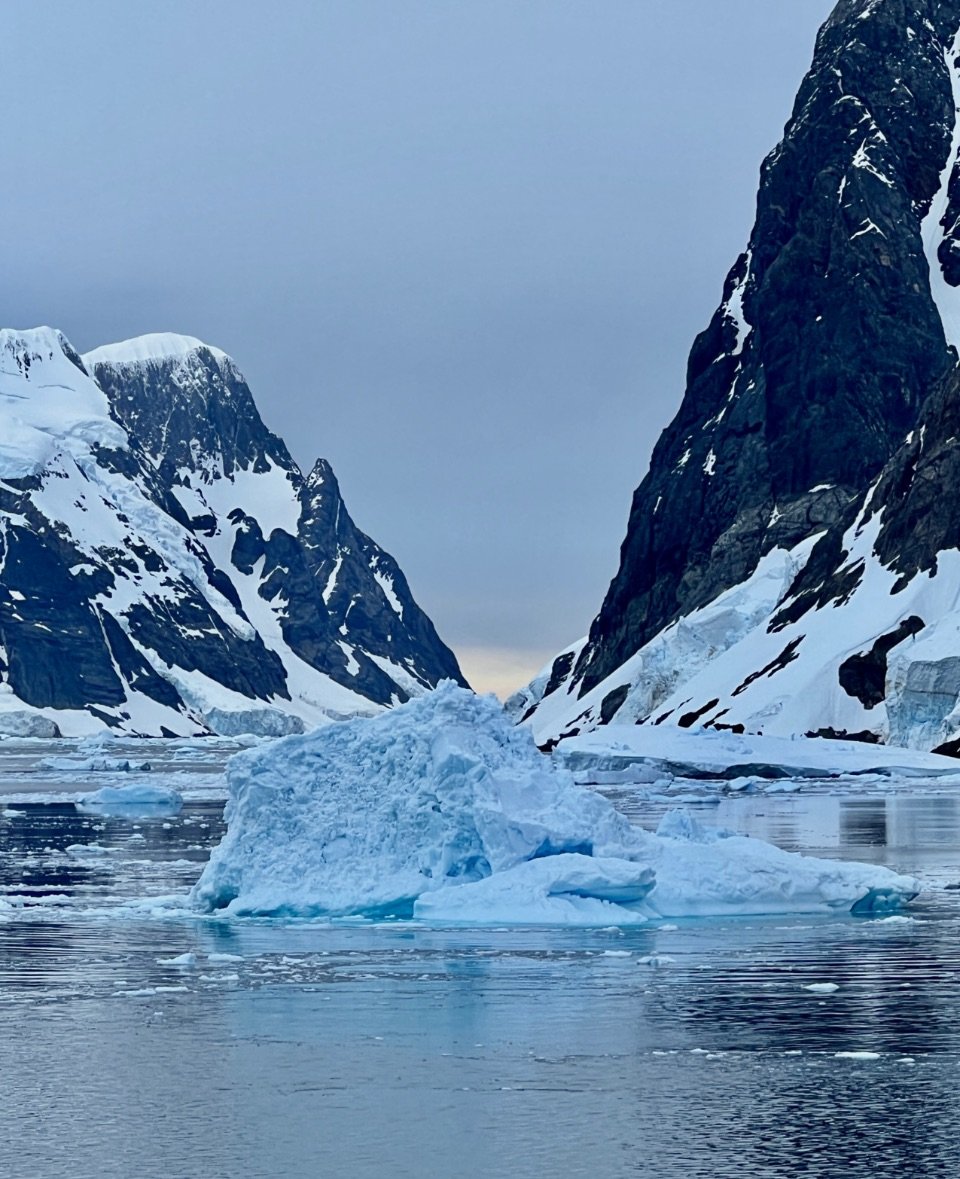Day 523 - Lemaire Channel and Iceberg Graveyard, Antarctica Day 5
Lemaire Channel
6:15 AM -- We awoke as the Ocean Diamond gingerly navigated its way through the Lemaire Channel, a beautiful but narrow waterway near the Kyiv Peninsula that would lead us to Paradise Cove.
The channel is 7 miles long and not very wide. Icy waters and gray, penumbral light greeted the day. Low clouds hung over jagged peaks and they ran like razors right to the sea. Fresh snow hung in the mountain crevices and you could see where immense chunks of ice had thundered down the slopes – these were the icebergs that were floating majestically before us and clogging the channel.
We clustered on the ship's bow to watch the Ocean Diamond thread its way through the thickening maze of icebergs. There were so many that the Captain had been up most of the night making sure we didn't have a Titanic moment. Now we were stopped by chunks of ice the size of small mountains, and plenty of smaller ones that might offend the ship's hull.
The throat of the narrows grew tighter, the icebergs grew more numerous, working their way north to south. Far away the low light beckoned.
From my non-nautical point of view, collisions with these enormous blocks of ice looked like a close thing to me. The icebergs are dense, compressed for thousands of years until every bubble has been smashed out of them. Moving nimbly through a space like this is not a simple matter. But the views were awe-inspiring and in time we did get through.
Iceberg Graveyard
It’s afternoon after the ship manages to thread its way through the Lemaire Channel. We piled into our zodiacs again. This time to make our way among what the expedition team called the Iceberg Graveyard. It WAS that. All around icebergs the size of Volkswagens and icebergs the size of small mountains heaved and bobbed, heavy with their enormous size. Below in the crystalline water you could make out the other 90% of the monsters below. Above they glided elegantly by, stately as monarchs, in blinding white, some with deep blue highlights.
Any ice that we see — every glacier, every iceberg, every small chunk that we see is thousands of years old. In another time they had fallen in the snow on some mountain, joined one of its glaciers, became pressed and smashed between fresh snow above and the rock and ice below. The glaciers may look motionless to us, but they never are. They constantly move where gravity takes them, patiently biding their time until, at least in these parts, they calve and fall to the sea in the state that we were now looking at them.
The smallest types of ice are called brash - it is this that our zodiac was continually bumping against. But there are also icebergs called grinders and tabular icebergs and domed and blocky and dry docked and pinnacled icebergs, and we saw every kind.
When you are there gazing at them it feels magical; it’s difficult to convince yourself that you are really there. But you are.













